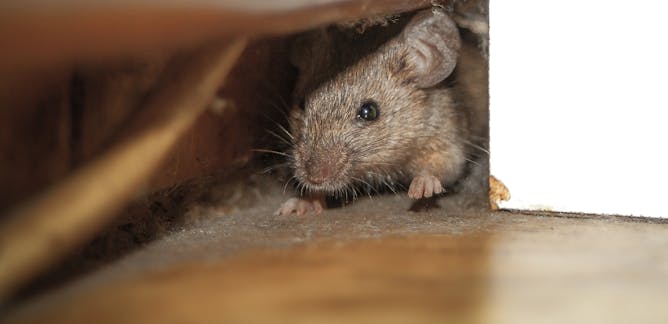
Articles on Scientists at work
Displaying 1 - 20 of 61 articles

An evolutionary biologist is studying what these resilient urban pests can teach us about adaptation and evolution.

Not much is known about the predator fly Laphria saffrana. New research identified how they count the wingbeats of their favored prey, letting it slip out of focus before adjusting their heads.

After scientists’ GPS tracking tag was violently removed from one shark’s dorsal fin, they were in for a surprise: The wound didn’t just heal, but the missing tissue grew back.

An unusual lake with distinct layers of low-oxygen and high-iron water lets researchers investigate conditions like those in the early Earth’s oceans.

An appreciation for the moths that chomp holes in your clothes. They eat the inedible, occupy the uninhabitable and overcome every evolutionary obstacle in their way.

The meteorologist leading NOAA’s 2022 hurricane field program describes flying through eyewalls and the technology in these airborne labs for tracking rapid intensification in real time.

As the world locked down and a country’s racial reckoning heated up, this social scientist refined her approach to studying the lives of Black moms.

Rivers are among the most embattled ecosystems on Earth. Researchers are testing a new, inexpensive way to study river health by using eDNA to count the species that rivers harbor.

Scientists enjoyed informing, exciting and inspiring the public.

For the endangered Kemp’s ridley sea turtle, every individual matters. A team of veterinarians and biologists has formed a network along the Gulf Coast to save injured sea turtles and the species.

In northwest Mexico, biologists are building a network of radio towers to track how individual migratory birds move among important wetland areas.

Microphones on the seafloor recorded life under the Antarctic ice for two years – inadvertently catching seal trills and chirps that are above the range of human hearing. Could they be for navigation?

Birds found along the Gulf Coast have evolved to ride out hurricanes and tropical storms. But with development degrading the marshes where they live, it’s getting harder for them to bounce back.

Biologists capture and collar coyotes in urban Los Angeles in order to study the effectiveness of ‘hazing’ as a wildlife management tool.

Researchers are using a newly developed satellite tag to study previously unknown aspects of tiger shark reproduction. This approach could be used on other difficult-to-study shark species.

Scientists behind a major new study explain how they discovered these forests are becoming less able to sequester carbon.

Sending autonomous vehicles to the Southern Ocean can be fraught with anxiety, especially if one of them doesn’t make radio contact when it’s supposed to.

A paleooceanographer describes her ninth sea expedition, this time retrieving cylindrical ‘cores’ of the sediment and rock that’s as much as two miles down at the ocean floor.

When you study volcanoes at mid-ocean ridges, doing fieldwork means becoming an aquanaut – diving thousands of feet to the ocean floor in the submersible Alvin, trading tight quarters for amazing views.

It turns out to be fairly complicated to figure out how electricity will flow through materials – a crucial question for designing new electronics and semiconductor materials.
